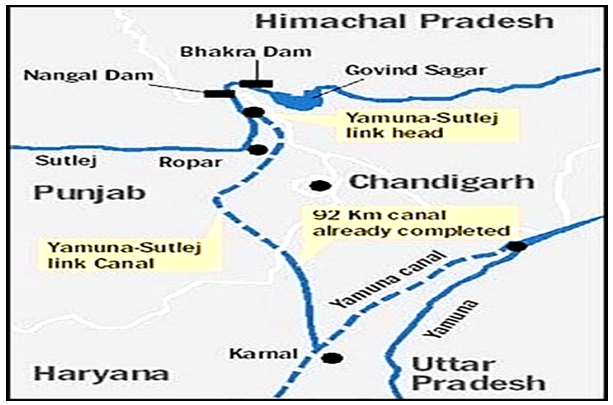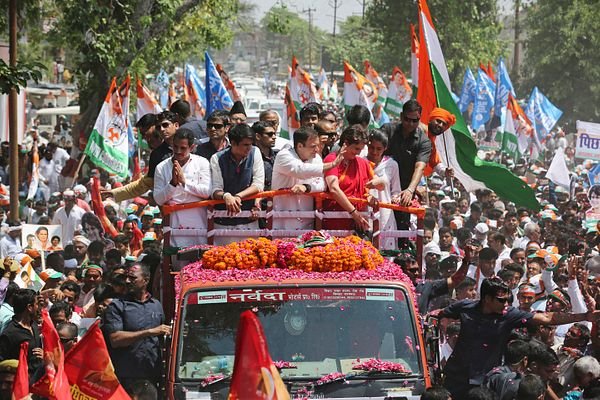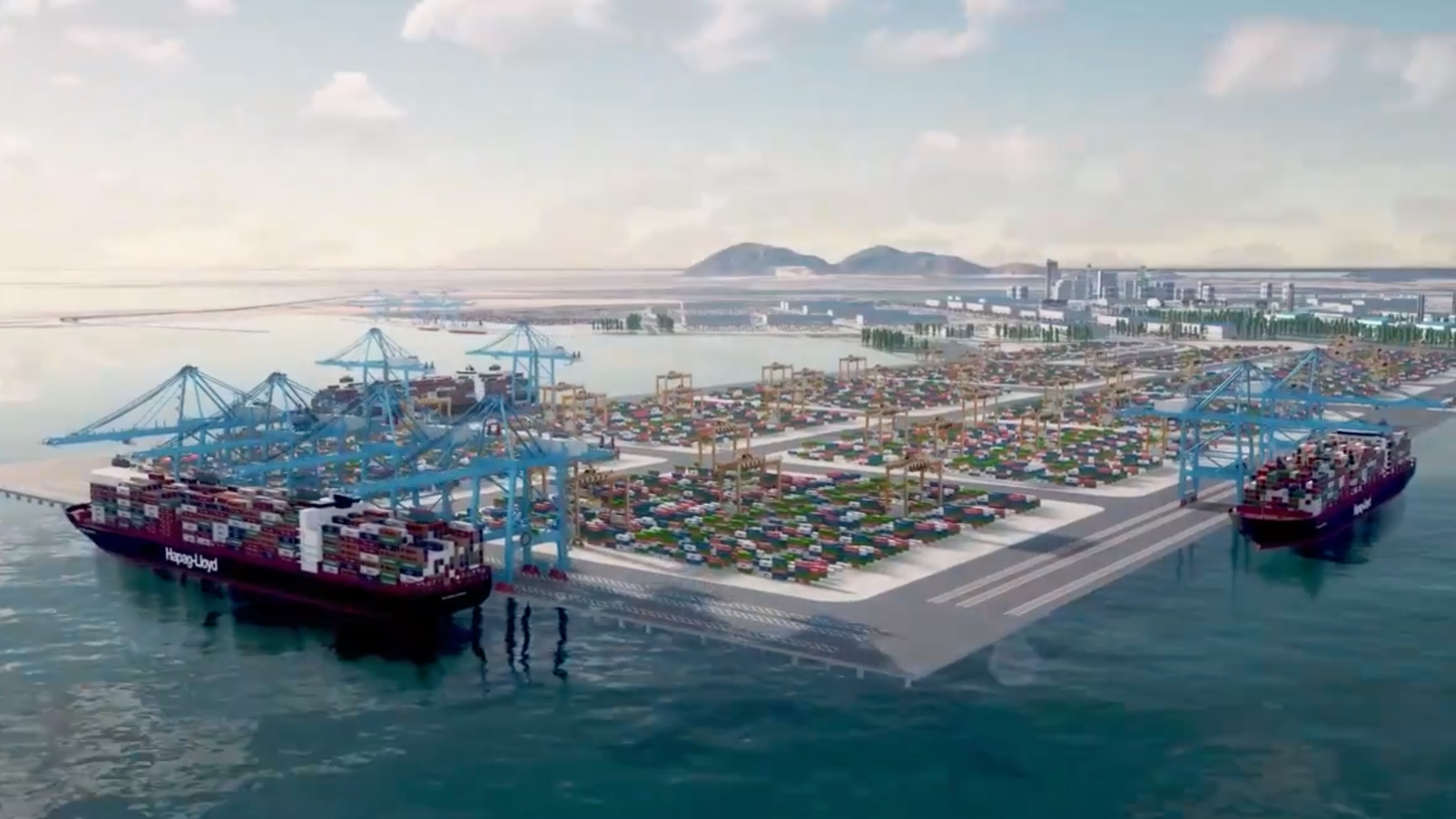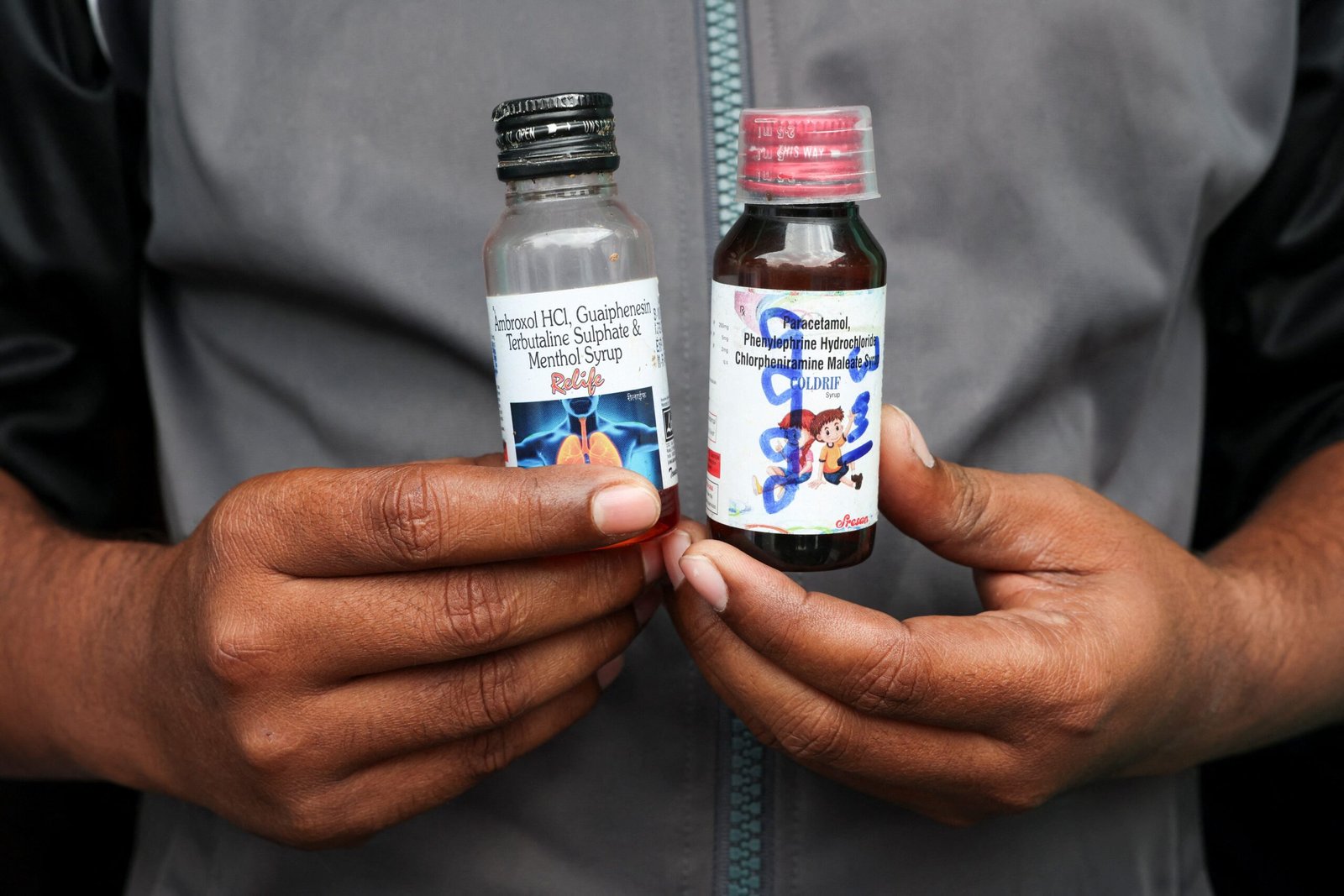Latest Context
Recently, the Supreme Court has ordered the Punjab Government to complete Sutlej-Yamuna Link (SYL) canal, warning the Government to comply with its orders.
- The court directed the Union Government to oversee talks between Punjab and the Haryana governments on this topic
Background
The Issue stems from a controversial 1981 water-sharing agreement drawn up when Haryana was carved out of Punjab in 1966.
- 1960: The dispute can be traced back to the Indus Water Treaty between India and Pakistan, allowing the former ‘free and unrestricted use’ of Ravi, Beas and Sutlej.
- 1966: Creation of Haryana from the old (undivided) Punjab presented the problem of giving Haryana its share of river waters.
- For Haryana to get its share of the waters of the Sutlej and its tributary Beas, a canal linking the Sutlej with the Yamuna was planned (SYL Canal).
- 1981: Both states mutually agreed for the re-allocation of water.
- 1982: Construction of the 214-km SYL was launched in Kapoori village, Punjab.
- Agitations, protests and assassinations were carried out in protest creating the environment of terrorism in the state and making the issue of national security.
- 1985: PM Rajiv Gandhi and then Akali Dal chief Sant signed an accord agreeing for a new Tribunal to assess the water.
- The Eradi Tribunal headed by Supreme Court Judge V Balakrishna Eradi was set up to reassess availability and sharing of water.
- In 1987, the tribunal recommended an increase in the shares of Punjab and Haryana to 5 MAF and 3.83 MAF, respectively.
- 1996: Haryana moved the Supreme Court (SC) seeking directions to Punjab to complete the work on the SYL.
- 2002 and 2004: SC directed Punjab to complete the work in its territory.
- 2004: Punjab Assembly passed the Punjab Termination of Agreements Act, terminating its water-sharing agreements and thus jeopardizing the construction of SYL in Punjab.
- 2016: SC started hearings into a presidential reference (Article 143) to decide on the legality of the 2004 Act and declared that Punjab backed out of its promise to share the waters of rivers. Thus, the act was termed constitutionally invalid.
- 2020: SC directed the Chief Ministers of both states to negotiate and settle the SYL canal issue at the highest political level to be mediated by the Centre.
- Punjab has asked for a tribunal for fresh time-bound assessment of the water availability.
- Punjab holds that there has been no adjudication or scientific assessment of river waters in the state till date.
- The availability of Ravi-Beas water has also come down from the estimated 17.17 MAF in 1981 to 13.38 MAF in 2013. A fresh tribunal would ascertain all this.
Argument of Punjab and Haryana
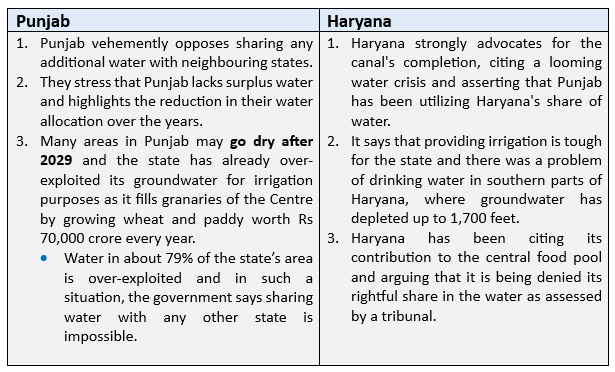
Significance of Sutlej-Yamuna Link Canal
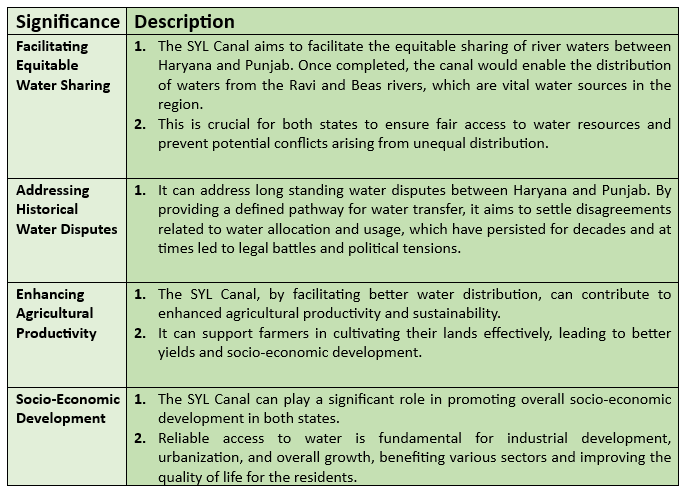
Reasons of Water Sharing Issues Among Various States
Water sharing issues among various states, not only in India but in many parts of the world, are complex and multifaceted, often involving several factors.
Major reasons that contribute to water sharing issues among states:
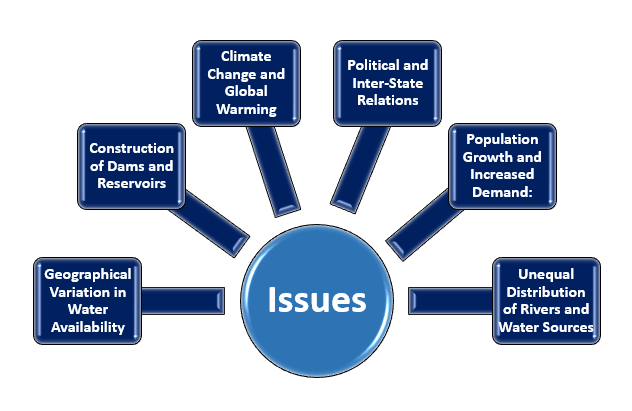
Geographical Variation in Water Availability: Different states have varying levels of access to water resources due to their geographical location, topography, and proximity to rivers, lakes, or other sources of water.
Some states may naturally have more abundant water resources, while others may face water scarcity.
Climate Change and Global Warming: Climate change and global warming are altering weather patterns and affecting precipitation levels, leading to changes in the availability and distribution of water.
Erratic rainfall, prolonged droughts, and changing monsoon patterns can exacerbate water scarcity issues and create conflicts over water sharing.
Unequal Distribution of Rivers and Water Sources: The distribution of rivers and other water sources across states is often unequal, causing disputes over access and utilization.
States located upstream may have control over the source of a river, while downstream states may face challenges in securing their fair share of water.
Construction of Dams and Reservoirs: The construction of dams and reservoirs for various purposes can significantly alter the flow of rivers and affect water availability downstream.
Population Growth and Increased Demand: Rapid population growth in certain states increases the demand for water for various purposes, including agriculture, industry, and domestic use.
This heightened demand puts pressure on available water resources, leading to conflicts over allocation and sharing.
Political and Inter-State Relations: Political factors, interstate relations, and differing priorities among states can influence negotiations and agreements related to water sharing.
Political considerations, power dynamics, and electoral interests can complicate the resolution of water disputes.
Sustainable Solution for Water Sharing Issues
Water Conservation and Efficiency Measures: Implementing water-saving technologies and promoting water conservation practices in agriculture, industry, and households can significantly reduce water demand.
Modernizing Irrigation Systems: Upgrading irrigation infrastructure to more efficient systems like drip irrigation can minimize water wastage in agriculture, a sector that consumes the majority of water resources.
Real-time Monitoring and Forecasting: Utilizing technology for real-time monitoring of reservoir levels, river flows, and weather patterns can aid in effective water management and timely decision-making, especially during climatic uncertainties.
Conflict Resolution Mechanisms: Establishing efficient conflict resolution mechanisms, possibly outside the legal framework, can help states resolve water-sharing disputes more expediently and collaboratively.
An atmosphere of cooperation and understanding among neighbouring states is necessary to address water disputes amicably.
River Basin Ecosystem Restoration: Focusing on restoring and preserving river basin ecosystems can enhance the sustainability of water resources. Healthy ecosystems contribute to the quality and availability of water.
Ensuring comprehensive EIAs (Environmental Impact Assessment) before initiating any water-related project can prevent or mitigate adverse effects on water sources and ecosystems.
Way Forward
The water disputes can be solved or balanced by having a permanent tribunal established with appellate jurisdiction of the Supreme Court established over the tribunal’s decision.
The immediate target of any Constitutional Government should be amendment to Article 262 (Adjudication of disputes relating to waters of inter State rivers or river valleys) and amendment to Inter-State Water Disputes Act and its implementation at the equal note


